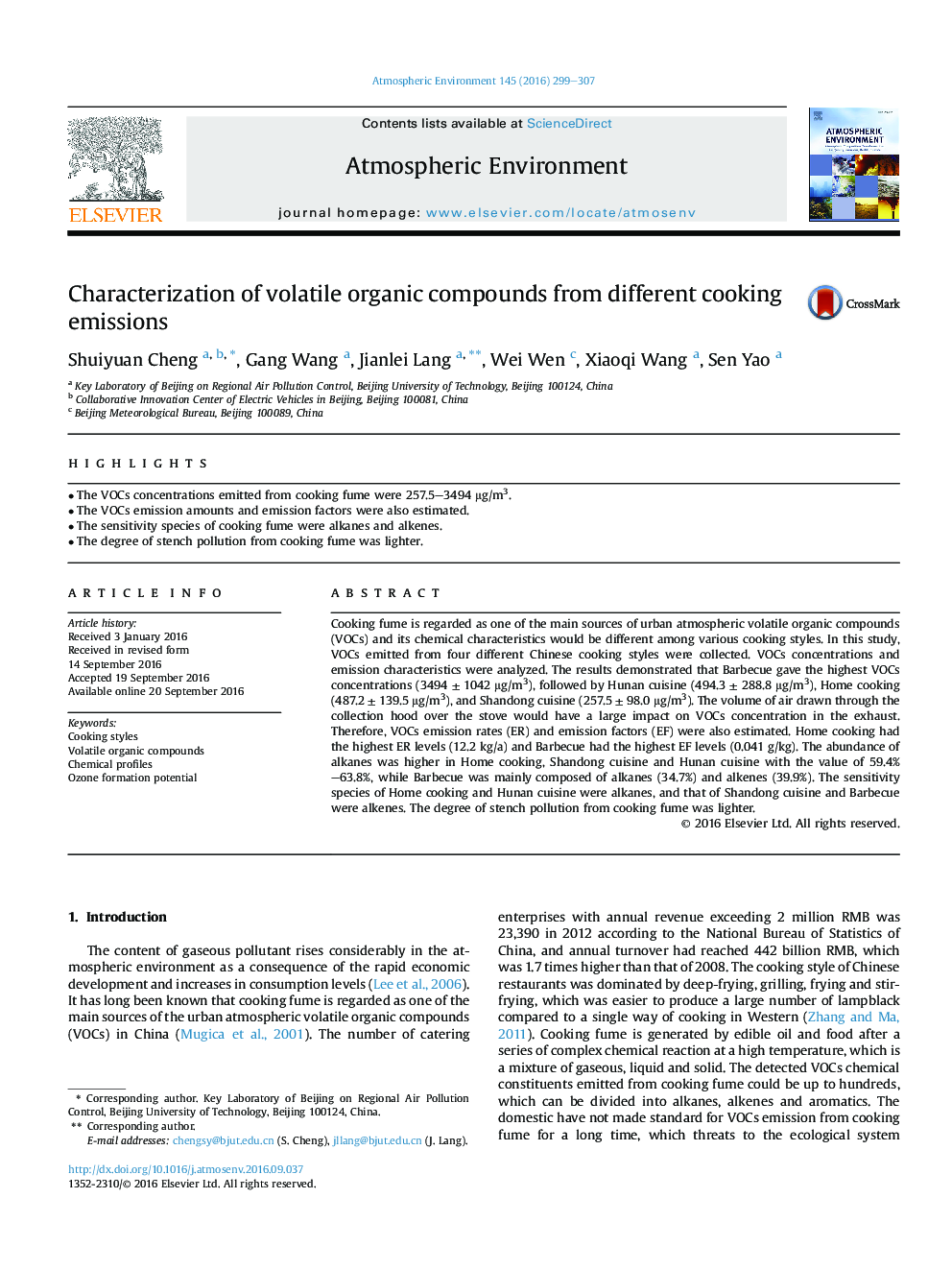| Article ID | Journal | Published Year | Pages | File Type |
|---|---|---|---|---|
| 6335856 | Atmospheric Environment | 2016 | 9 Pages |
â¢The VOCs concentrations emitted from cooking fume were 257.5-3494 μg/m3.â¢The VOCs emission amounts and emission factors were also estimated.â¢The sensitivity species of cooking fume were alkanes and alkenes.â¢The degree of stench pollution from cooking fume was lighter.
Cooking fume is regarded as one of the main sources of urban atmospheric volatile organic compounds (VOCs) and its chemical characteristics would be different among various cooking styles. In this study, VOCs emitted from four different Chinese cooking styles were collected. VOCs concentrations and emission characteristics were analyzed. The results demonstrated that Barbecue gave the highest VOCs concentrations (3494 ± 1042 μg/m3), followed by Hunan cuisine (494.3 ± 288.8 μg/m3), Home cooking (487.2 ± 139.5 μg/m3), and Shandong cuisine (257.5 ± 98.0 μg/m3). The volume of air drawn through the collection hood over the stove would have a large impact on VOCs concentration in the exhaust. Therefore, VOCs emission rates (ER) and emission factors (EF) were also estimated. Home cooking had the highest ER levels (12.2 kg/a) and Barbecue had the highest EF levels (0.041 g/kg). The abundance of alkanes was higher in Home cooking, Shandong cuisine and Hunan cuisine with the value of 59.4%-63.8%, while Barbecue was mainly composed of alkanes (34.7%) and alkenes (39.9%). The sensitivity species of Home cooking and Hunan cuisine were alkanes, and that of Shandong cuisine and Barbecue were alkenes. The degree of stench pollution from cooking fume was lighter.
